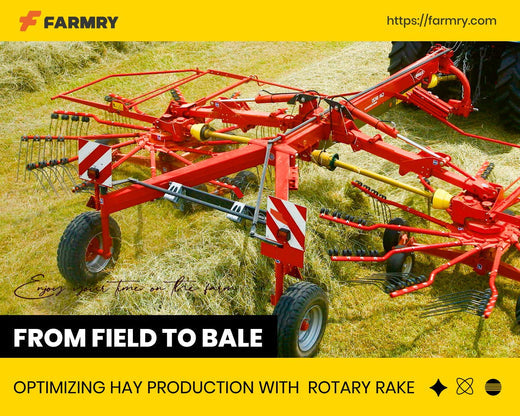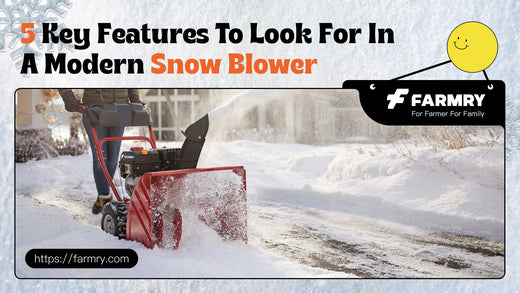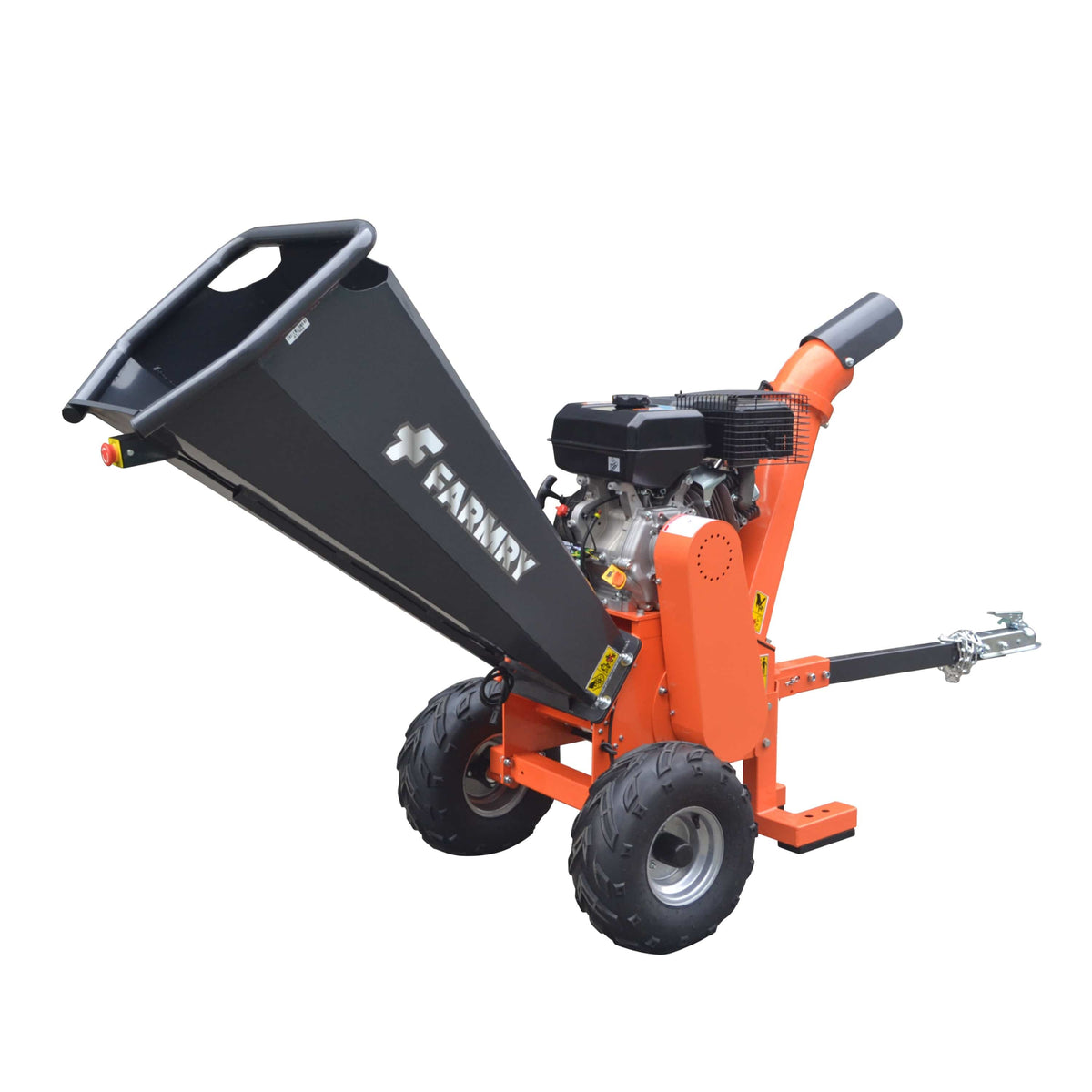Buy a Stump Grinder: The Complete Guide Before You Clear That Land
If you’ve been circling the same stumps for months, paying rental fees, or waiting on a contractor’s schedule, it’s time to buy a stump grinder and take control. A goodstump grinder turns an all-day headache into an afternoon win—whether you’re a DIY landowner, a small farmer, or scaling a business. This guide walks you through machine types, teeth and pockets, machine size, productivity, safety, and ROI, with plain-spoken answers to the most common questions buyers ask before they click buy.
Why buy a stump grinder now?
-
Speed: With the right machine and teeth, you can turn a 24" diameter stump into grindings in minutes—freeing up ground for fencing, gardens, or a new build.
-
Control: Stop juggling rental calendars and “maybe next week” quotes. When you own the machine, you pick the day, the job, the pace.
-
ROI: If you clear a couple of stumps a month—or run a stump grinding business—ownership usually beats renting within the first season.
-
Versatility: Tackle one stump or a lot of stumps scattered across acreage. Use the grinder when you need it, then park it.
-
Knowledge: The more you grind, the better you get. That knowledge compounds, making each job easier and more efficient.
Types of stump grinders (and who they’re for)
When you choose a grinder, machine size matters as much as horsepower. Here are the main models and types you’ll see:
1) PTO / 3-Point Stump Grinders (for tractors)
Attach to your tractor’s 3-point and PTO. Great for homesteaders, ranchers, and municipalities that already own compact or utility tractors.
Why buy: Lowest total cost for bigger power, simple maintenance, and easy parts support. Good for mixed stump diameter.
Watch for: PTO HP compatibility (e.g., 15–45 HP), swing range, number of teeth (e.g., 24–34), and slip clutch protection.
2) Self-propelled Walk-Behind / Track Grinders
These machines are propelled and can snake through gates and tight yards.
Why buy: Access. Excellent for residential work and stump grinding business routes with 36" gates and garden beds.
Watch for: Weight (turf impact), teeth change speed, wear on belts, and parts availability.
3) Skid-steer & Excavator Attachments
Perfect when you already own the carrier and do mixed earthwork.
Why buy: One carrier, many tools.
Watch for: Hydraulics (GPM/PSI), pockets and teeth compatibility, and guarding.
Pro tip: If you already have a compact tractor, a PTO grinder is the “best stump grinder value” for many landowners. If you need tight access and fast setup across city lots, a self-propelled unit may be the best choice.
The anatomy of a grinder: teeth, pockets, and more
Your cutting system is the business end of the machine. Understanding it changes how you use the grinder and how often you replace parts.
-
Teeth: Usually carbide. Count, quality, and placement determine cutting rate. More teeth does not always mean faster—sharpness and engagement matter most.
-
Pockets & Bolts: The pockets hold the teeth. If you hit rock or rebar, a pocket can be replaced faster than a bent wheel.
-
Cutting Wheel (or Rotor): Diameter, thickness, and tip path affect bite. Larger wheels can clear bigger stumps, but they also add weight.
-
Swing & Depth Controls: Wider swing equals fewer repositionings; fine depth control gives a clean, level finish.
-
Guards & Shields: Direct grindings and chips away from windows and people, and help keep a tidy ground surface.
Maintenance rule of thumb: Inspect teeth before every job. Dull teeth increase wear, vibration, and time on site. A quick change of one or two teeth can save an hour of grinding.
Machine size vs. stump diameter (and site realities)
-
Small stumps (≤ 12" diameter): Compact PTO or small self-propelled units work well.
-
Medium (12–24"): Mid-range PTO or mid-size self-propelled grinders balance speed and cost.
-
Large (24"+): Bigger PTO or heavy self-propelled models reduce passes and operator fatigue.
Also consider state and site rules: slope limits, access width, utilities, and noise ordinances. Hard species (oak, hickory) grind slower than green or soft woods (pine). Moisture content affects chip size and dust; fresh, green stumps often grind a bit smoother than sun-baked oldest stumps.
Renting vs. buying (clear numbers, not just feelings)
-
Renting: $150–$300 per day is common. Add transport, deposits, wear charges, and the lost time waiting when the yard’s inventory is out.
-
Buying: A solid PTO grinder often pays for itself after a couple weekends or a handful of neighborhood jobs. If you’re launching a stump grinding business, ownership lets you share availability, schedule back-to-backs, and keep work moving without “call us next week” delays.
Rule you can run with: If you’ll grind 8–12 medium stumps this season, it’s time to buy.
How to choose the best stump grinder for your situation
Ask yourself these five questions and be honest with the answers:
-
How many stumps this year? Be conservative. If neighbors already asked for help, add those.
-
What’s the largest diameter? Your “best” pick should comfortably exceed the biggest stump you expect.
-
Access limits? Gates, slopes, terraces, and soft lawns call for the right machine size and turf care plan.
-
Do I own a tractor or skid-steer? If yes, leverage it. If not, a self-propelled unit might fit better.
-
Who will run it? Self training is fine with the right safety plan; new crews may prefer more guards and simpler controls.
Easier shopping checklist (print this section):
-
PTO HP / hydraulic spec
-
Width & weight
-
Teeth count and pockets
-
Slip clutch / guards
-
Parts list and where to order
-
Warranty & factory support
-
Lead time and delivery window
Safety and site prep
-
Mark utilities. Call before you dig or grind.
-
Shield windows & cars. Use chip deflectors.
-
Wear PPE: eye, ear, gloves, boots.
-
Control chips. Know your discharge direction.
-
Stabilize the machine. Level as needed.
-
Start shallow. Don’t take full bites on first contact, especially on hard species.
-
Stop & inspect if vibration spikes—likely dull teeth or a loose pocket.
Owning the workday: productivity tips that feel like magic
-
Share sort your jobs: group nearby stumps and similar diameter to cut travel and setup time.
-
Work the stump in thirds: top skim, mid bite, then finish flush to below grade.
-
Change one dull tooth early rather than three later.
-
Keep a lot of spare teeth and pockets in a labeled case; your future self says thanks.
-
Rake grindings into low spots to leave the ground smooth (clients love tidy results).
-
In heat, plan a shorter run, cool the machine, then resume—belts last longer.
Launching (or leveling up) a stump grinding business
If you’re turning this into a business, the grinder is step one; simple systems are step two:
-
Quotes & Replies: Send same-day quotes with photos and stump diameter. Quick reply wins jobs.
-
Scheduling: Offer 2–3 windows per week. Clients prefer choices rather than “sometime soon.”
-
Before/After Photos: Post to your site and social. New posts earn reactions and local trust.
-
Reviews: Ask satisfied clients to comment publicly. One good post can generate a couple referrals.
-
Forums: Share real results on local groups (avoid copy-pasting messy “bb code remove” junk). Link to your FAQs and safety notes.
-
Parts on Hand: Belts, teeth, pockets, grease, and a spare shear bolt—needed to keep the day on track if something snaps.
-
Pricing: Flat rate for small ones, per-inch beyond base, add-ons for haul-off. Be clear in writing.
FAQ: quick answers before you hit “buy”
Q: What’s the “best stump grinder” for a tractor in the 15–45 HP range?
A: A 3-point PTO grinder with 24–34 carbide teeth, slip clutch, and wide swing arc is a great fit. Match your PTO HP and machine size to your largest stump.
Q: How often do I replace teeth?
A: It depends on soil, species, and rocks. Check before each job. Many operators replace a few teeth every day of heavy grinding; others go several jobs. Keep spares.
Q: Can I use the grindings as mulch?
A: Yes. Grindings are fine to leave in low areas. For fresh green wood, you can mix with soil so it breaks down faster.
Q: Should I start with used equipment?
A: Used can be fine, but verify parts availability and factory support. Some older models are great; others are oldest stock with scarce parts.
Q: Walk-behind vs PTO—what’s easier to learn?
A: PTO units feel familiar if you use 3-point attachments. Walk-behind self-propelled grinders are nimble in yards. Pick the type that fits your usual sites.
How to buy with confidence
-
Measure access & largest diameter. Don’t guess—measure the widest stump and the narrowest gate.
-
Match power. Confirm PTO HP or hydraulic flow.
-
Verify parts. Ask where to order teeth, pockets, belts, and common parts.
-
Read real-world threads. Scan forums and “related threads” for updated experiences (ignore outdated quotes and clutter).
-
Plan your first five jobs. Your thoughts become reality when you book real sites.
-
Get trained. A 10-minute safety section at the tailgate reduces worry and keeps the machine running.
-
Follow up. After each job, post results, share photos, reply to comments, and say thanks to referrers.
Final thoughts
If you’re still on the fence, remember this: the “best stump grinder” is the one you actually use. Choose the machine size that fits your gates and the diameter you’ll see most, keep spare teeth ready to replace, and schedule real jobs so your grinder earns its keep. Whether you’re cleaning up a homestead or building a stump grinding business, the right grinder turns “I should do that someday” into “done.”
Ready to clear your land? Buy a stump grinder that matches your tractor or site access, keep the maintenance simple, and start grinding stumps on your time—not someone else’s calendar.







